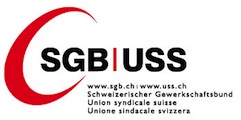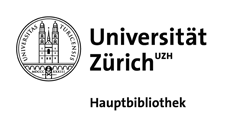Publications des institutions partenaires
The second wave of global liquidity: why are firms acting like financial intermediaries?
Recent work suggests that non-financial firms have acted like financial intermediaries particularly in emerging economies. We corroborate these findings but then ask why? Our results indicate evidence for carry-trade activities but focused in countries with higher levels of capital controls, particular controls on inflows. We find little evidence for such activities given other...
Institution partenaire
Institut de hautes études internationales et du développement
/ 18/11/2015
Survival of the fittest: corporate control and the cleansing effect of financial crises
How does the market for corporate control reallocate firm ownership in response to adverse aggregate financial shocks? To answer this question, we develop a tractable model of mergers and acquisitions (M&As) where firms facing different degrees of financial constraints acquire ownership of illiquid domestic firms. We show that acquisitions by financially constrained acquirers, on...
Institution partenaire
Institut de hautes études internationales et du développement
/ 18/11/2015
Riot rewards? study of BJP's electoral performance and Hindu muslim riots
Do incidents of ethnic polarization influence voter behavior? I address this question through the case study of India, the world’s largest functional democracy. Specifically, I test whether prior events of Hindu-Muslim riots electorally benefit Bharatiya Janta Party (BJP), a prominent Hindu nationalist party? The paper contributes to the literature by being the first to establish a...
Institution partenaire
Institut de hautes études internationales et du développement
/ 18/11/2015
Billions on the sidewalk: improving savings by reducing investment mistakes
This paper contributes the on-going debate on income inequality in advanced economies with a proposal aimed at reducing costly investment mistakes that are prevalent among middle-class households. The paper starts by describing how households should invest, compares it with what we know about how households do invest, and highlights discrepancies between the two (investment mistakes...
Institution partenaire
Institut de hautes études internationales et du développement
/ 18/11/2015
Is the monetary policy rate effective?: recent evidence from Ghana
We examine the effectiveness of monetary policy transmission mechanism in Ghana using several of statistical and econometric techniques for the period 2002M1 – 2014M12. We find monetary policy rate (MPR) to be quite effective in signaling the money market interest rates in both the short run and long run, as the effect is incomplete (that is, not one-to-one). In addition, a hierarchy...
Institution partenaire
Institut de hautes études internationales et du développement
/ 16/11/2015
Modelling and forecasting of Tunisian current account: aggregate versus disaggregate approach
While there is considerable literature attempting to model current account, there are not many studies to forecast current account balance. This study gives a comprehensive way to model and predict current account deficit (CAD) by evaluating the forecasting performance of direct and indirect approach. At the disaggregated level, I use two variants to model current account components...
Institution partenaire
Institut de hautes études internationales et du développement
/ 16/11/2015
Closing the gender gap in education: what is the state of gaps in labour force participation for women, wives and mothers?
The educational gender gap has closed or reversed in many countries. But what of gendered labour market inequalities? Using micro-level census data for some 40 countries, the authors examine the labour force participation gap between men and women, the “marriage gap” between married and single women’s participation, and the “motherhood gap” between mothers’ and nonmothers’...
Institution partenaire
Institut de hautes études internationales et du développement
English / 12/10/2015
Does public sector control reduce variance in school quality?
Does the government control of school systems facilitate equality in school quality? Whether centralized or localized control produces more equality depends not only on what ‘could’ happen in principle, but also on what does happen in practice. We use the Programme for International Student Assessment (PISA) database to examine the association between school sector and the variance...
Institution partenaire
Institut de hautes études internationales et du développement
English / 12/10/2015
The rule of law without the rule of lawyers? Why investment arbitrators are from mars, trade panelist are from Venus
Institution partenaire
Institut de hautes études internationales et du développement
/ 07/10/2015
Institutions, corporate governance and capital flows
Countries with weaker domestic investor protection hold less diversified international portfolios. An equilibrium business cycle model of North-South capital flow with corporate governance frictions between outside investors and corporate insiders explains this phenomenon through two channels. First,weak governance leads to concentrated ownership in the South because international...
Institution partenaire
Institut de hautes études internationales et du développement
English / 05/10/2015
Antitrust, regulatory capture and economic integration
Institution partenaire
Institut de hautes études internationales et du développement
/ 12/08/2015
Institutions, mobilization and rebellion in post-colonial societies
We revisit the simultaneous equations model of rebellion, mobilization, grievances and repression proposed by Gurr and Moore (1997). Our main contribution is to clarify and improve on the underlying identification strategy and to emphasize the role played by the institutional environment. Instrumental variables estimates for post-colonial societies reveal that the strength of the...
Institution partenaire
Institut de hautes études internationales et du développement
Français, English / 29/07/2015
WTO 2.0: governance of 21st century trade
The cross-border flows of goods, investment, services, know-how and people associated with international production networks–call it ‘supply-chain trade’ for short–has transformed the world. The WTO has not kept pace. This paper argues that adapting world trade governance to the realities of supply-chain trade will require a new organization–a WTO 2.0 as it were. Reasoning on the...
Institution partenaire
Institut de hautes études internationales et du développement
Français, English / 24/07/2015
The impact of three Mexican nutritional programs: the case of Dif-Puebla
This paper presents an impact evaluation of three nutritional programs implemented in Puebla, Mexico, run by SEDIF, a social assistance institution. The present study uses both a propensity score matching and weighting in order to balance the treatment and the control groups in terms of observable characteristics, and to estimate, later on, the causal effect of the programs on...
Institution partenaire
Institut de hautes études internationales et du développement
English / 23/07/2015
Masked development: exploring the hidden benefits of the Zapatista conflict
In 1994, the Zapatistas took up arms claiming for indigenous people rights in Chiapas, Mexico. After 12 days of civil war, the national government called for dialogue. Nevertheless, since then, it has deployed a "low intensity war" over the self-declared Zapatista Autonomous Communities. At the same time, the Zapatistas started to implement a new set of institutions, which have...
Institution partenaire
Institut de hautes études internationales et du développement
English / 23/07/2015
What drives financial inclusion at the bottom of pyramid?: empirical evidence from microfinance panel data
Microfinance has played a key role in including the poor in financial markets. This paper uses microfinance data to approximate financial inclusion in the poorer segments of the population and proposes a quantile regression approach to study the development of microfinance markets. Our approach accounts for the dynamic and heterogeneous impacts that key drivers may have across...
Institution partenaire
Institut de hautes études internationales et du développement
English / 23/07/2015
Doing well by doing good ?: empirical evidence from microfinance
This paper proposes novel identification techniques to examine the trade-offs that microfinance institutions face between increasing their profits and their social impact. It uses a quantile regression approach to examine how these trade-offs evolve as institutions become more commercialized. The identification strategy is based on an instrumental variable approach, and also...
Institution partenaire
Institut de hautes études internationales et du développement
English / 23/07/2015
Supply-chain trade : a portrait of global patterns and several testable hypotheses
The trade linked to international production networks – supply-chain trade for short – is associated with momentous global economic changes. This paper presents a portrait of the global pattern of supply-chain trade and how it has evolved since 1995. The paper draws on a variety of data sources but most heavily on the recent World Input-Output Database. China’s supply-chain trade...
Institution partenaire
Institut de hautes études internationales et du développement
/ 23/07/2015
Too much finance or statistical illusion: a comment
A recent policy brief from the Peterson Institute suggests that the “Too Much Finance” result may be an artifact of spurious attribution of causality. While more works needs do be done to understand the links between finance and growth and explore the drivers of possible non-monotonicities, this note shows that the too much finance result is robust.
Institution partenaire
Institut de hautes études internationales et du développement
/ 08/07/2015
Empirical evidence for the bank lending channel in Bosnia and Herzegovina: does lending differ between large and small banks?
The paper investigates transmission of different foreign and domestic shocks to bank lending activity in Bosnia and Herzegovina through the bank lending channel. The bank lending channel is analyzed in a time series cross sectional data framework for the period 2006q1- 2014q1, investigating reactions of small vs. large banks to those shocks. First, the evidence has been found that...
Institution partenaire
Institut de hautes études internationales et du développement
/ 08/07/2015
Pages
Le portail de l'information économique suisse
© 2016 Infonet Economy












